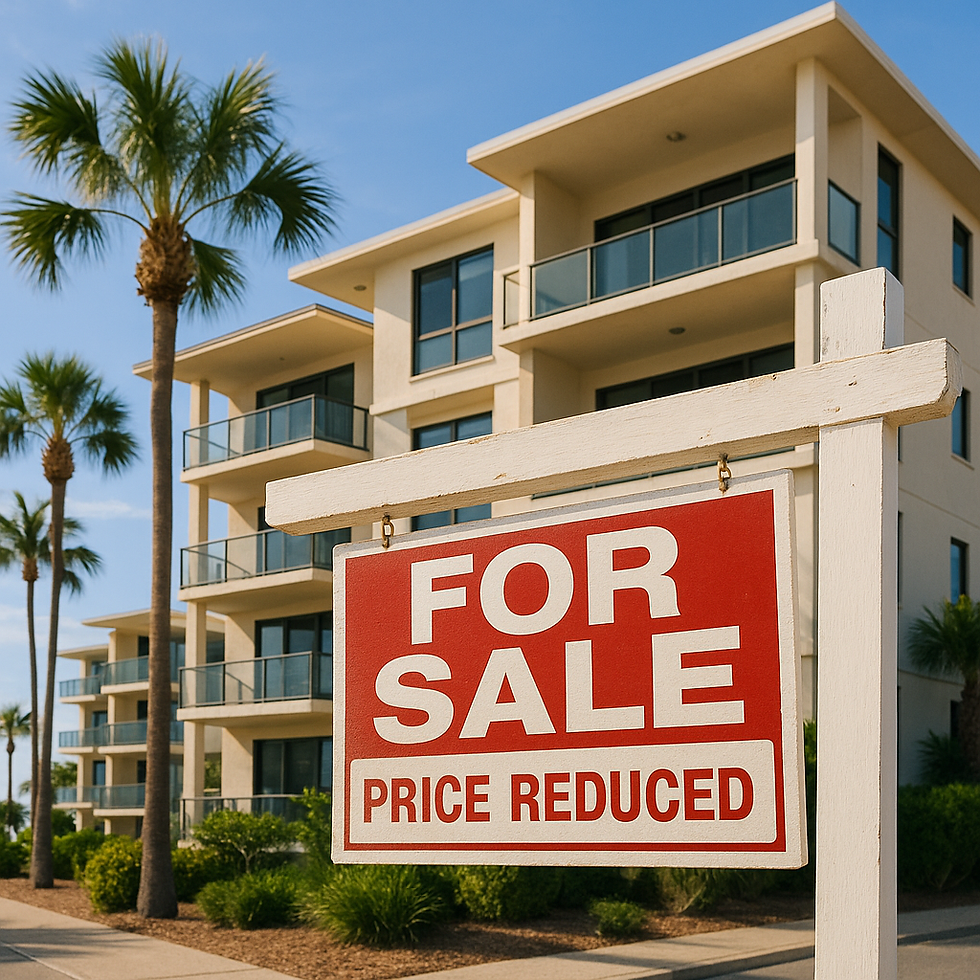Homeowners Selling at a Loss Is on the Rise. But What About Indiana?
- Jennifer Tesorero
- Jul 18
- 3 min read
While whispers of a cooling real estate market are turning into headlines across the country, Indiana residents may have less reason to panic.
A recent report from Redfin reveals that nearly 6% of U.S. homeowners are at risk of selling their homes at a loss if they listed today. That’s up from 4.4% a year ago, though still considered low compared to pre-pandemic norms. The broader takeaway? Not all markets are created equal—and where you live matters more than ever.
🏙️ Big City Trouble: Coastal & Sunbelt States Lead the Decline
Major metros like San Francisco (20%), Austin (13.8%), and Oakland (11%) top the list of areas with the highest share of at-risk homeowners. In these markets, prices spiked dramatically during the pandemic—then softened under the weight of rising interest rates and overbuilding, particularly in places like Florida and Texas.
Condos are especially vulnerable. In San Francisco, over 35% of condos listed are likely to sell at a loss. Similarly, condo-heavy cities like Portland and Oakland are also showing high risk levels.
The root cause? A mix of post-pandemic migration, skyrocketing insurance and HOA fees, and an oversupply of newly built homes in the Sunbelt.
🧭 How Does Indiana Compare?
If you’re a homeowner or buyer in Indiana, the landscape looks considerably more stable.
While Redfin’s national data paints a more cautious picture, Indiana’s real estate market hasn’t experienced the same volatility. In cities like Indianapolis, the market remains balanced—with steady appreciation, fewer pandemic-era price surges, and no massive new construction boom flooding the supply.
According to local real estate trends:
Inventory remains tight, which supports home values.
Condos make up a smaller share of the market, reducing Indiana’s exposure to the kinds of losses seen in condo-saturated cities.
Median days on market remain relatively low in Indiana’s metros, indicating consistent demand.
Affordability is better than the national average, keeping local buyers more active.
While some recent buyers—particularly those who purchased at peak interest rates—might see minimal value growth, the odds of taking a loss in Indiana are far lower than in high-risk coastal or southern metros.

🏡 Who’s Most at Risk Nationwide?
Redfin’s report highlights that post-pandemic buyers, especially those who purchased between 2021 and mid-2022, are feeling the pinch most. Roughly 16.4% of these homeowners could lose money if they sold now.
In contrast:
Only 1.8% of pre-pandemic buyers are at risk.
9% of those who bought during the pandemic could see losses.
In Austin, nearly half (47.5%) of homes purchased after July 2022 would sell at a loss. Meanwhile, Indiana homeowners aren’t even close to making this kind of list.
💡 A Silver Lining for Buyers?
While this trend may concern some sellers, it creates opportunity for buyers—especially first-timers who were priced out in recent years. Redfin’s data shows that many sellers with strong equity are now more flexible, leading to price reductions and better deals for active buyers.
This is especially relevant in states where the market has softened significantly. But in Indiana, where price drops have been less common, buyers may still need to act fast for competitive properties.
📊 The Bigger Picture: Market Fluidity and Interest Rates
Redfin predicts that if home prices fall another 1–3% nationally, the number of homeowners at risk could increase to 8.1%. But the wild card? Interest rates.
Recent political developments suggest potential changes at the Fed could impact rates significantly. If interest rates are cut meaningfully, home values could bounce back quickly—especially in more affordable markets like Indiana.
✅ Final Thoughts: Indiana = Stability
If you're buying or selling in Indiana, you're likely in one of the more resilient housing markets in the U.S. While national headlines might cause concern, local data shows strength, steady demand, and limited risk of large-scale losses—especially compared to the Sunbelt or West Coast.
Whether you’re a buyer or seller, it’s crucial to stay local in your perspective and work with professionals who understand Indiana’s unique real estate landscape.


Comments